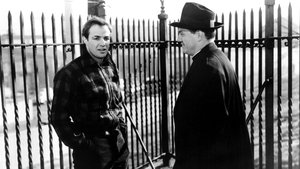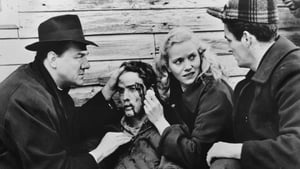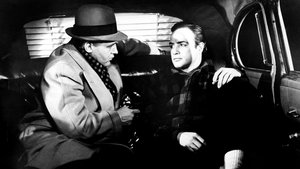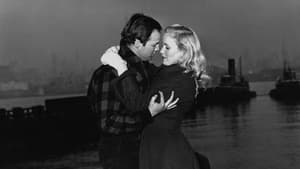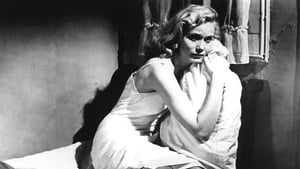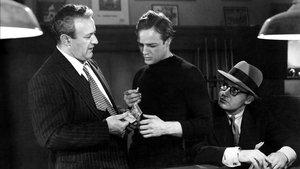Contact: [email protected]
Video Sources 0 Views

Synopsis
[ez-toc]





Introduction
In the vast landscape of classic cinema, few films have left an indelible mark like Elia Kazan’s “On the Waterfront Colorized” (1954). A powerful exploration of corruption, morality, and human resilience in the gritty docks of Hoboken, New Jersey, this black-and-white masterpiece has stood the test of time. However, in the pursuit of keeping classic films relevant, the controversial practice of colorization has come into play. This article delves into the impact of colorizing “On the Waterfront Colorized” and explores whether it enhances or compromises the original’s visual aesthetic and narrative experience.
Read Media File Transfer Agreement: Terms and Conditions
Read FAQ
Understanding the Historical Context of On the Waterfront Colorized
To fully appreciate the significance of colorizing “On the Waterfront Colorized,” it’s crucial to revisit the historical context in which the film emerged. Directed by Elia Kazan and written by Budd Schulberg, the movie unfolds against the post-World War II American backdrop, portraying the struggles of the working class in the shadow of corruption. The narrative revolves around Terry Malloy, a character immortalized by Marlon Brando, as he navigates moral quandaries and confronts the pervasive influence of the mob on the waterfront.
The collaboration between Kazan and Schulberg resulted in a film that earned eight Academy Awards, including Best Picture, Best Director, and Best Actor for Brando. The original black-and-white cinematography, capturing the harsh realities of the industrial landscape, has been celebrated for its visual storytelling prowess.
The Art of Colorizing On the Waterfront Colorized: Balancing Authenticity and Enhancement
Colorization, the process of adding color to black-and-white films, is a contentious practice in the film industry. When applied to a classic like “On the Waterfront Colorized,” it raises questions about preserving the authenticity of the original work. The restoration process involves meticulous attention to detail to maintain the essence of the film while introducing a vibrant new dimension.
As we explore the colorized version of “On the Waterfront Colorized,” it’s imperative to analyze how this transformation affects the overall viewing experience. Does the addition of color enhance the emotional resonance of the narrative, or does it risk diluting the intended impact of the original monochrome palette?
Impact on Cinematic Experience: Does Colorization Enhance or Detract from the Film?
Colorization has been lauded for its potential to breathe new life into old movies, making them more accessible to contemporary audiences. However, in the case of “On the Waterfront Colorized,” the debate intensifies. Does the infusion of color elevate the film’s immersive qualities, drawing viewers deeper into the struggles of the characters, or does it compromise the artistic integrity and historical authenticity?
The controversy surrounding colorization hinges on the delicate balance between preserving the original filmmaker’s vision and catering to evolving audience preferences. As we delve into the colorized version of “On the Waterfront Colorized,” it becomes imperative to scrutinize its impact on audience immersion and emotional connection. Is the colorization a faithful enhancement, or does it risk overshadowing the nuanced storytelling that made the original a classic?
Marlon Brando: From Shades of Gray to Vivid Color
One of the central figures in “On the Waterfront Colorized” is Marlon Brando, whose portrayal of Terry Malloy remains a touchstone for cinematic excellence. The transition from black-and-white to color poses a unique challenge in capturing the subtleties of Brando’s performance. How does the colorization impact the nuances and shades that Brando expertly brought to the character in the original version?
Exploring Brando’s journey from the monochromatic palette to vivid color allows us to dissect the layers of his performance. Does the colorization enhance the depth of emotions conveyed by Brando, or does it risk diluting the raw power of his original portrayal? As we traverse the spectrum of Terry Malloy’s character, we unravel the impact of colorization on one of cinema’s most iconic performances.
The Supporting Cast: Shining Through Colorful Moments
Beyond Brando, “On the Waterfront Colorized” boasts a stellar supporting cast, each contributing to the film’s rich tapestry. Karl Malden as Father Barry, Lee J. Cobb as Johnny Friendly, and the debutante Eva Marie Saint as Edie Doyle – each character brings a unique dimension to the narrative. How does the addition of color influence the performances of these supporting actors, and does it amplify or diminish their contributions to the film?
Analyzing the colorized portrayals of Malden, Cobb, and Saint allows us to discern whether the restoration process enhances their on-screen presence. Do the colorful moments breathe new life into these characters, or do they risk overshadowing the subtleties that made the original performances memorable? “On the Waterfront Colorized” thrives on the chemistry of its ensemble cast, and the colorization begs the question of whether it accentuates or disrupts this delicate balance.
Setting the Tone: The Role of Music in On the Waterfront’s Cinematic Universe
A pivotal aspect of “On the Waterfront Colorized” is Leonard Bernstein’s musical score, which adds an evocative layer to the film’s narrative. As we traverse from black-and-white to color, the question arises: does the addition of color influence the auditory experience? Bernstein’s composition, carefully crafted to complement the visual storytelling, becomes a focal point for examining the interplay between color and music in cinematic storytelling.
The analysis of Bernstein’s score in both versions allows us to discern whether the colorization enhances or detracts from the immersive quality of the music. Does the infusion of color elevate the emotional resonance of the score, or does it risk diluting the intended impact? “On the Waterfront Colorized” stands as a testament to the symbiotic relationship between image and sound, and the colorization introduces a dynamic element that merits careful consideration.
Revitalizing a Classic: The Relevance of Colorized On the Waterfront Colorized for New Generations
In an era dominated by technicolor spectacles, the relevance of black-and-white classics may wane for newer generations. The colorization of “On the Waterfront” seeks to bridge the gap between the past and the present, introducing a classic to audiences who may be less inclined to engage with monochrome cinema. How does the colorization contribute to the film’s appeal for contemporary viewers, and does it succeed in revitalizing a classic for a new era?
Exploring the influence of Malcolm Johnson’s articles and Pulitzer Prize win on the film’s storytelling provides insight into the societal context that shaped “On the Waterfront.” The colorized version becomes a lens through which new generations can connect with the film’s themes of social justice, corruption, and individual responsibility. As we navigate the waters of cinematic evolution, the question arises: does colorization serve as a gateway for younger audiences to appreciate the timeless brilliance of “On the Waterfront,” or does it risk diluting the authenticity that made the film a classic?
Preserving Film Heritage: Balancing Between Color and Monochrome
As we conclude our exploration of the colorized “On the Waterfront,” we confront the ongoing debate surrounding film colorization and its impact on preserving cinematic heritage. The clash between proponents of colorization, who argue for its role in making classic films more accessible, and purists, who advocate for the preservation of original black-and-white works, remains unresolved.
The delicate balance between color and monochrome is a critical consideration in the quest to honor the legacy of cinematic masterpieces. While colorization offers a fresh perspective and renewed relevance, it also raises questions about artistic integrity and historical authenticity. As we navigate the cinematic landscape, it becomes imperative to strike a balance that respects the intentions of the original filmmakers while embracing the evolving tastes of audiences.
In the case of “On the Waterfront,” the colorized version stands as a testament to the perpetual tug-of-war between tradition and innovation. It invites audiences to reevaluate a classic through a vibrant lens while challenging us to confront the broader implications of colorization in preserving film heritage.
In conclusion, the colorized “On the Waterfront” is a cinematic transformation that prompts reflection on the evolving nature of film preservation and accessibility. Whether it enhances or detracts from the original masterpiece is a subjective debate, but one thing remains clear – the colorization of old films is a powerful tool in shaping how we perceive and engage with the cinematic treasures of yesteryear.
